Trello Roadmap Guide: Create & Manage Product Roadmaps (2025 Templates)
What is a Trello Roadmap? A Complete Guide for Product Teams
A Trello roadmap is a powerful tool for product teams to visually map out their strategy and goals. By breaking down your product vision into clear, actionable steps on a Trello board, you can align your team, prioritize features, and communicate progress to stakeholders.
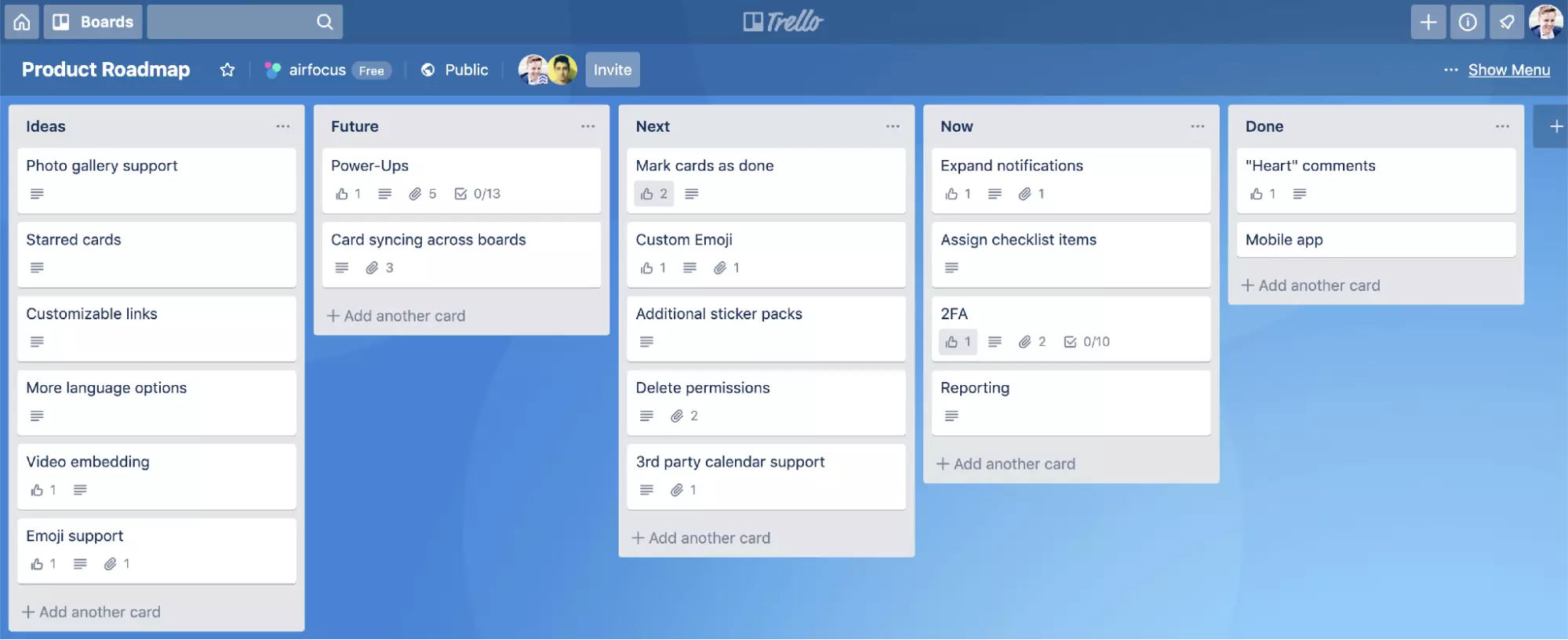
Trello's intuitive, flexible format is ideal for creating agile product roadmaps. You can easily organize and update your roadmap using boards, lists, and cards. Customize your workflow with labels, due dates, assignees, and other features to keep everyone on track.
Whether you're planning a new product launch or iterating on an existing one, a Trello roadmap helps you stay focused on what matters most. It provides a single source of truth for your product strategy, so you can make informed decisions and adapt to change.
By sharing your Trello roadmap with stakeholders, you can also gather valuable feedback and build buy-in for your vision. Trello's collaboration features make it easy to have conversations, share updates, and get everyone aligned around your product goals.
In short, a Trello roadmap is an essential tool for any product team looking to ship successful products. With its visual, collaborative format, Trello helps you plan, execute, and communicate your product strategy with clarity and confidence.
Getting Started: Essential Components of a Trello Roadmap
Whether you're a large or medium-sized company, a Trello product roadmap is a valuable tool for setting priorities and planning your project. Before diving into the technical details of creating a roadmap, it's important to understand the fundamental components and how they work together.
A basic Trello roadmap consists of a board with lists and cards representing different stages and tasks of your project. Typically, you'll want to create lists for near-term, medium-term, and long-term goals. Each list contains cards that break down the specific tasks, due dates, checklists, instructions, and relevant documents.
To ensure your roadmap is effective, start by clearly defining your priorities and the steps needed to achieve your goals. Keep the structure simple to avoid confusion and make the roadmap easy to follow. Including a list that explains how the board works, the meaning of labels and statuses, and other key information is also helpful for keeping everyone on the same page.
By focusing on these essential components and creating a straightforward, well-organized structure, you'll lay the foundation for a successful Trello roadmap that helps guide your project planning and execution.
Step-by-Step Guide: Creating Your First Trello Roadmap
Creating a Trello roadmap is a straightforward process that can be broken down into a few simple steps. Here's a step-by-step guide to help you create your first Trello roadmap template:
Step 1: Determine Your Priorities
Before diving into creating your Trello board, take some time to identify the key stages and milestones of your project. Consider the steps your team needs to take to achieve your goals, and aim to keep your roadmap structure simple and concise.
Step 2: Set Up Your Trello Board
Log in to your Trello account and click the "Create" button in the header. Select "Create Board," and fill in the necessary information, such as the board name, color, and background.
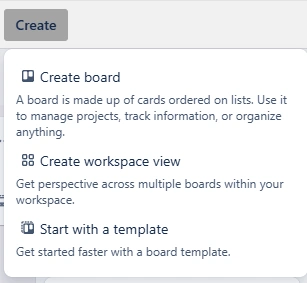
Step 3: Add Lists to Your Board
Create lists to represent the different phases of your roadmap. A typical roadmap template includes four lists: one for key information about the roadmap's structure and three for near-term, medium-term, and far-term tasks. Click "Add a list," give it a name, and select "Add list."
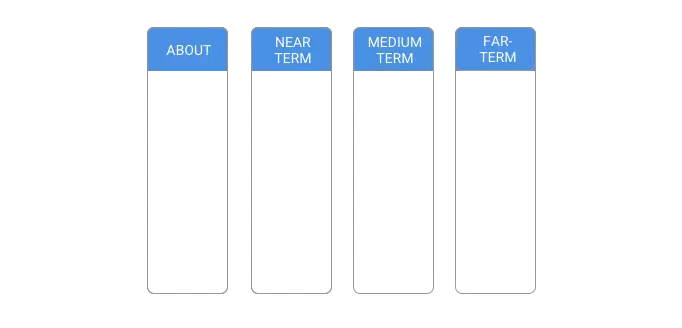
Step 4: Create Cards for Each Task
Add cards to the appropriate lists, representing specific tasks, due dates, checklists, instructions, or documents relevant to your short, medium, and long-term goals. Navigate to the desired list and click "Add a card."
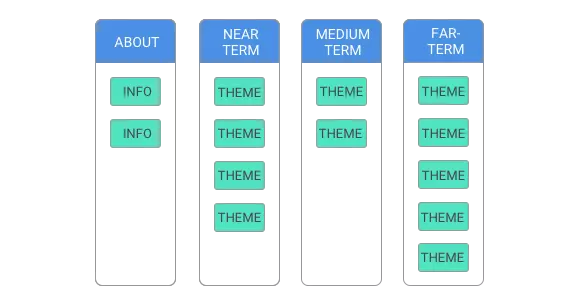
Assign team members or stakeholders to each card and ensure your Trello board looks organized and easy to understand.
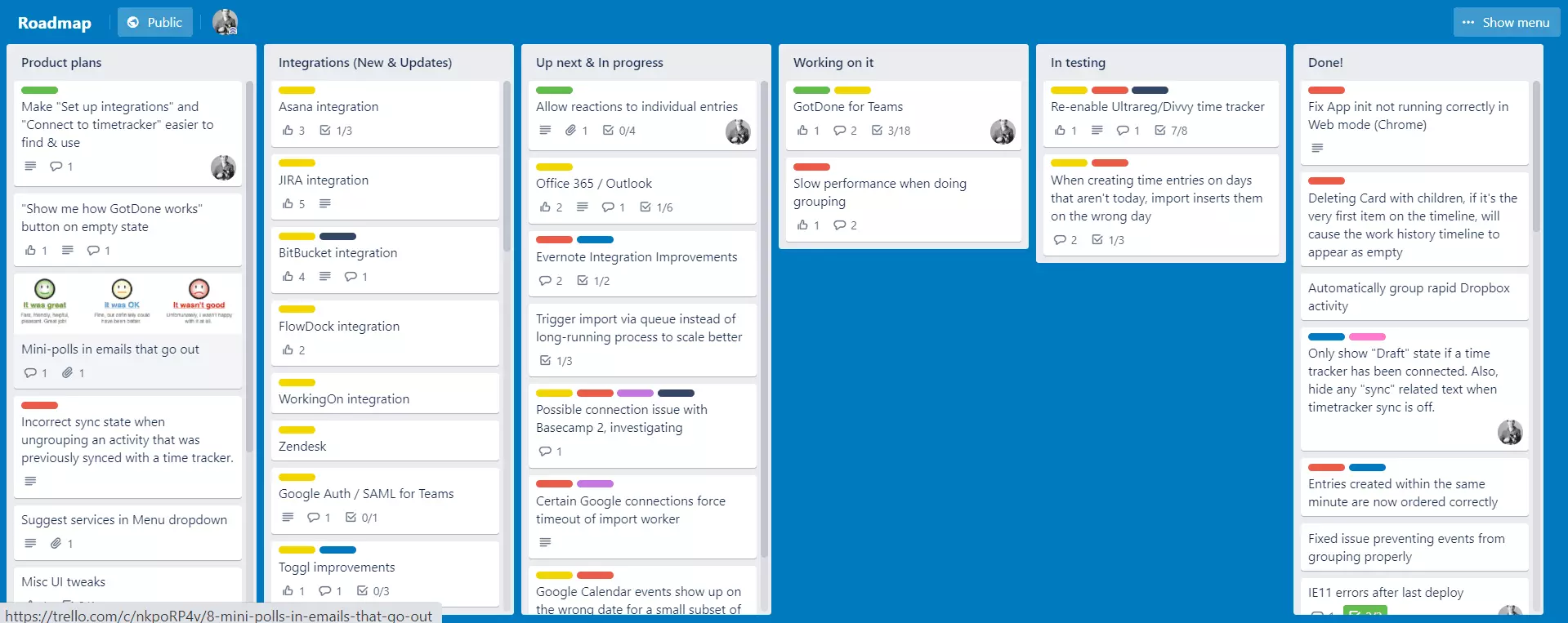
Step 5: Include a Roadmap Key
Dedicate the first list in your roadmap to explaining how the board works for your team members and stakeholders. Use this space to define color tags, layout, list functions, and card statuses. This will save time and prevent confusion in the future.
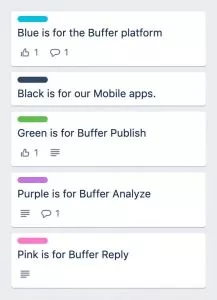
By following these steps, you'll have a solid foundation for your Trello roadmap. As you become more familiar with the platform, you can explore advanced features like privacy settings, feedback options, feature requests, customization, and labeling to enhance your roadmap template and tailor it to your team's needs.
Advanced Trello Roadmap Features and Customization
Now that you've created your Trello board, lists, and cards, it's time to enhance them to get the most out of your product roadmap in Trello. Here are some advanced features to help you out:
Customization is key when it comes to using Trello effectively for your roadmap. One way to achieve that is by adding your preferred images as boards' backgrounds or cards' cover images. To make things lighter and fun, you can also add emojis and gifs, as they'll instantly add spice to your boards. If you have a paid membership, you can customize the view of your Trello roadmap boards to calendar, timeline view, table, dashboard, and map.
Labels are stellar ways of bringing life into your Trello roadmap boards, as they add color and vividness. Make sure you create a color-labeled theme that you'll also include in your "About" card as a guide to keep team members consistent. This will help you group relative items together and make your boards more readable.
Trello power-ups can take your roadmap to the next level. For example, the Trello Voting Power-Up crowdsources input and lets you preview which cards get the most votes. This is an excellent opportunity to open up a conversation and gain perspective through others people's input.
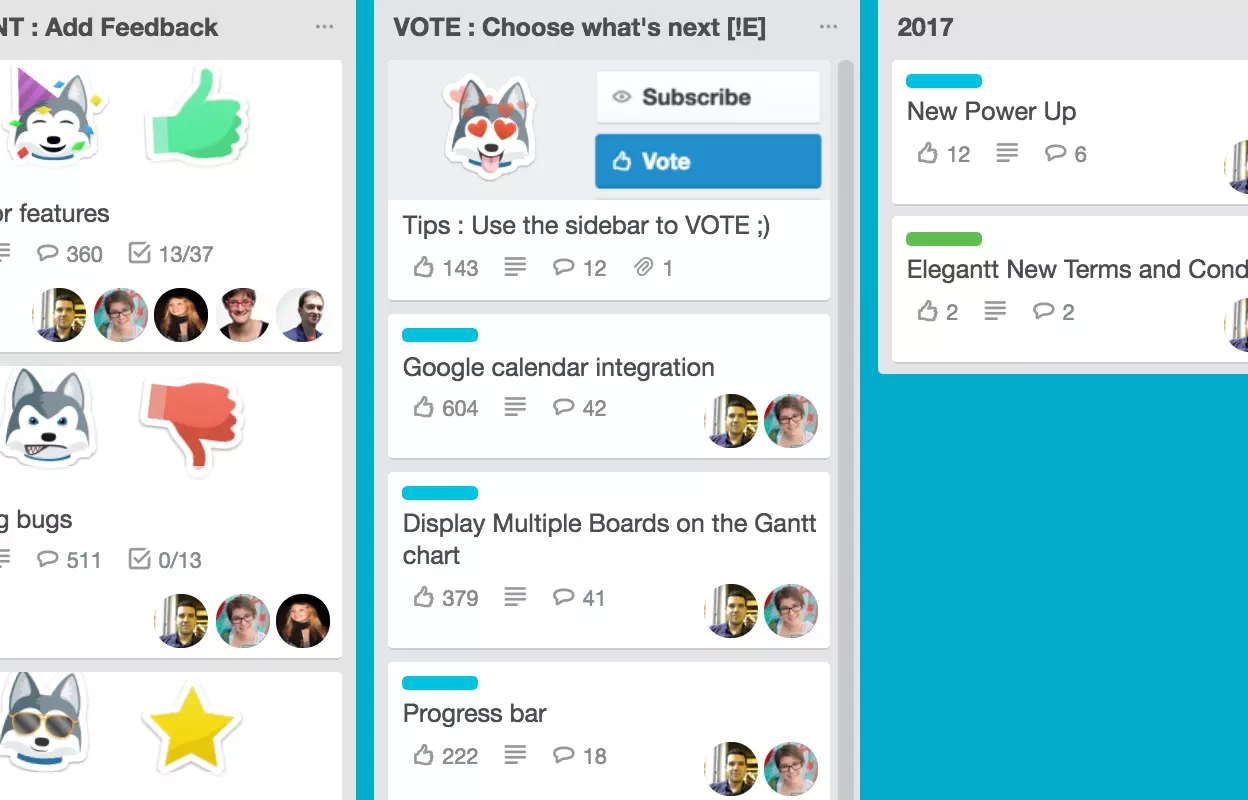
Custom fields are another powerful feature that allows you to add extra metadata to your Trello cards. You can use them to track progress, priority, or any other relevant information for your roadmap items. This will help you keep your roadmap organized and provide valuable insights at a glance.
By leveraging these advanced features like timeline view, custom fields, and power-ups, you can create a highly customized and effective Trello roadmap that meets your specific needs. Don't be afraid to experiment and find what works best for your team and project.
Public vs Private Roadmaps: Choosing the Right Visibility
When creating your Trello roadmap, you have options for visibility and privacy. You can choose to make the board private, public, or share it with specific team members. The right choice depends on your goals and stakeholder management needs.
A public roadmap, like the one used by Buffer, allows for transparency and open communication with customers and stakeholders. This approach enables you to gather valuable feedback, encourage engagement, and build trust with your audience. If you want to set that up, do check out the Trello Forms Power-Up.
On the other hand, a private roadmap is suitable when you need to keep certain information confidential within your organization. This option is ideal for managing internal stakeholders and aligning teams without exposing sensitive data to the public.
A hybrid approach is to create two roadmaps: one for internal use and another for public sharing. This allows you to maintain privacy while still providing updates and gathering feedback from external stakeholders.
Ultimately, the choice between a public roadmap, private roadmap, or a combination of both depends on your specific needs and stakeholder management strategy. Consider your goals, the level of transparency you want to maintain, and the best way to engage and communicate with your stakeholders when deciding on the visibility of your Trello roadmap.
Real-World Examples: Successful Trello Roadmap Implementation
Companies of all sizes have successfully implemented Trello roadmaps to plan and communicate their product vision. Here are a few diverse case studies showcasing best practices and creative approaches:
Monzo, a UK-based bank, created a simple yet effective public Trello roadmap template. They used a minimal structure with just three lists: "Coming soon", "In the future", and "Finished". Each roadmap item links to its own landing page with latest updates, details, feature requests, and discussions. The roadmap features beautiful illustrations that convey the brand's personality.
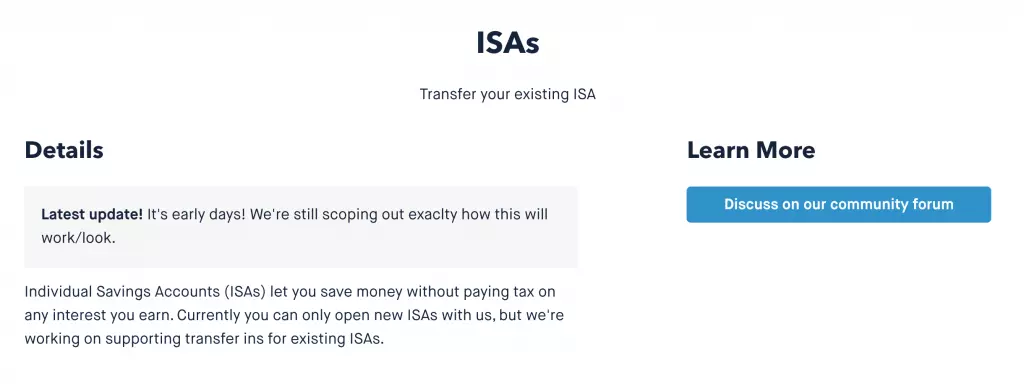
Attendify, an event technology company, built a slightly more complex public product roadmap focused on items being researched, designed, and developed. Launched items get their own page to declutter the main board. They include a feedback option under each item so users can share input directly with the team. Attendify also has a "How we build" section providing a behind-the-scenes look at their processes.
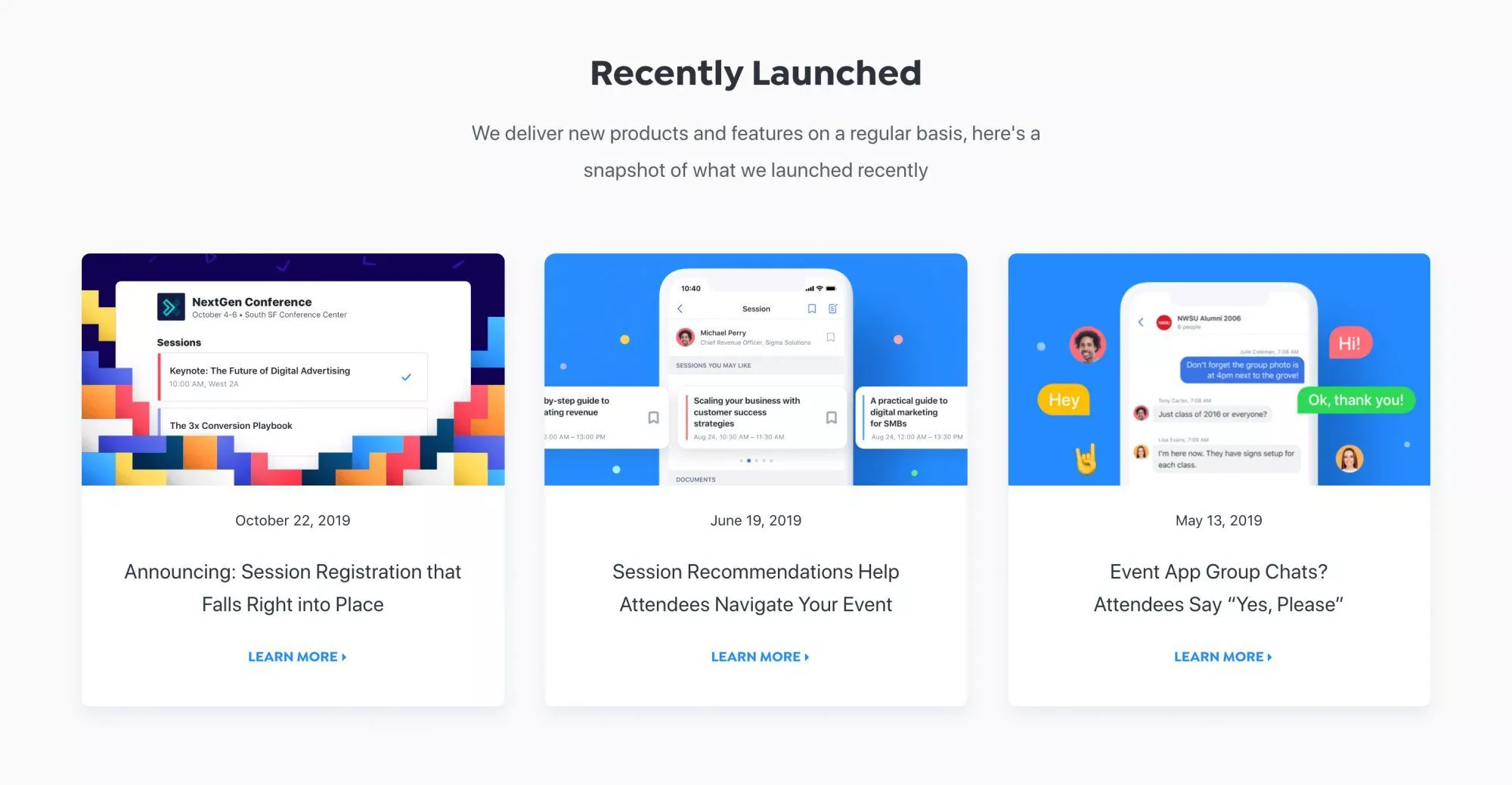
Trello itself offers an excellent example of a public roadmap. Their board clearly communicates the status of each item, from "Under consideration" to "Released". Color-coded labels indicate the product area, such as "Android" or "iOS". The Trello team actively engages with user feedback and feature requests right on the roadmap cards.
These trello roadmap examples from Monzo, Attendify and Trello showcase some best practices: keep the structure simple, provide ways for users to learn more and give feedback, add visual elements to communicate brand and personality, and engage actively with the roadmap content. By implementing these techniques, companies can build highly effective and engaging Trello roadmaps.
Integrations and Analytics: Maximizing Your Trello Roadmap
Blue Cat Reports: Unleashing the Power of Trello Integrations and Analytics
While Trello is a fantastic tool for creating and managing your product roadmap, integrating it with powerful reporting and analytics tools can take your roadmap to the next level. This is where Blue Cat Reports comes in. As a robust Trello integration, Blue Cat Reports allows you to generate comprehensive reports and gain valuable insights from your Trello boards.
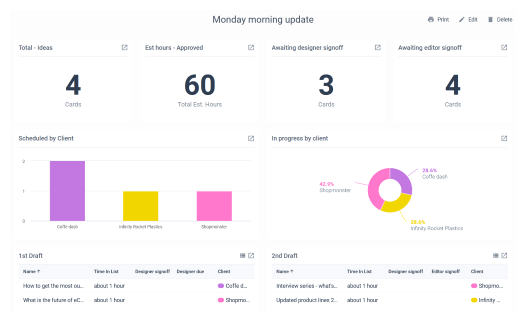
By leveraging Blue Cat Reports, you can unlock the full potential of your Trello roadmap and make data-driven decisions. The integration enables you to:
-
Visualize your roadmap progress: Blue Cat Reports provides visually appealing and easy-to-understand reports that showcase the progress of your roadmap items. You can quickly identify which tasks are on track, which ones are falling behind, and where resources need to be allocated.
-
Analyze key metrics: With Blue Cat Reports, you can dive deep into the metrics that matter most to your roadmap. Gain insights into task completion rates, team performance, and bottlenecks. These analytics empower you to optimize your processes and ensure your roadmap stays on course.
-
Customize reports: Every roadmap is unique, and Blue Cat Reports allows you to tailor your reports to your specific needs. Choose the data points you want to include, select the desired visuals, and create reports that align with your roadmap goals. This flexibility ensures that you have the information you need to make informed decisions.
-
Collaborate and share: Blue Cat Reports makes it easy to share your roadmap analytics with stakeholders and team members. Generate shareable links or export reports in various formats, ensuring that everyone stays informed and aligned. Collaboration becomes seamless, and transparency is enhanced.
By integrating Blue Cat Reports with your Trello roadmap, you can unlock a wealth of insights and take your roadmap management to the next level. Make data-driven decisions, optimize your processes, and ensure your roadmap stays on track towards success.
Start leveraging the power of Trello integrations and analytics today with Blue Cat Reports. Sign up for a free trial and experience the difference it can make in your roadmap planning and execution.
Troubleshooting and Best Practices
Creating a Trello roadmap is a great way to plan and manage your projects, but it's not always smooth sailing. Here are some common issues you may encounter and tips for overcoming them:
Issue: Lack of clarity and focus
Solution: Before creating your roadmap, take a step back and clearly define your priorities and goals. Use the "About" list to provide a roadmap key that explains how the board works, including color tags, layout, and statuses.
Issue: Overwhelming or cluttered board
Solution: Keep your roadmap simple and focused. Avoid endless columns, cards, and tags. Use labels to group related items and make your boards more readable. Consider separating launched items onto their own page to declutter the main board.
Issue: Limited feedback and communication
Solution: Encourage feedback and communication through your roadmap. Enable comments, use the Trello Voting Power-Up to crowdsource input, and provide a feature request form for users to submit ideas. Make sure to link to relevant blog posts or other resources to keep everyone informed.
By following these Trello tips and best practices for roadmap management, you can overcome common issues and create a clear, effective roadmap that keeps your team on track and aligned with your goals. Remember, your roadmap is a living document that should be regularly reviewed and updated as priorities shift and new information becomes available.
Conclusion: Taking Your Trello Roadmap to the Next Level
Creating a Trello roadmap is a powerful way to boost your chances of success by planning your vision and sharing it with your team. By following the steps outlined in this article, you can create a clear and effective roadmap that keeps everyone aligned and focused on your goals.
To take your Trello roadmap to the next level, consider using advanced features like visibility settings, feedback options, feature requests, customization, and labeling. These features can help you optimize your roadmap for maximum impact and engagement.
Finally, don't forget to leverage the valuable data generated as you work on your Trello boards, lists, and cards. By using a Power-Up like Blue Cat Reports, you can generate beautiful reports and gain insights into what's working on your roadmap over time.
Ready to get started with creating your own Trello roadmap for success? Sign up for a free trial of Blue Cat Reports today and take your roadmap to the next level!